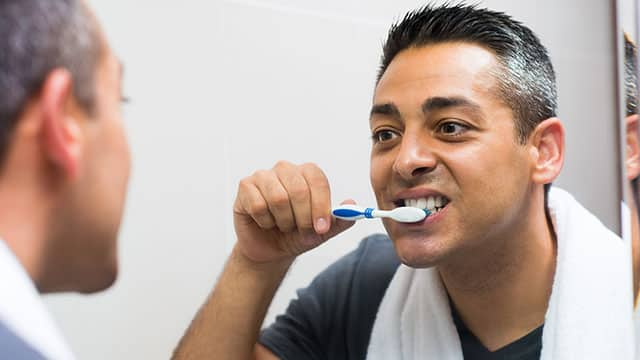What Are Dental Implants and How Do They Work?
Dental implants are metal fixtures, surgically fastened to your jawbone below the gums, onto which artificial teeth can be mounted. These metal implants actually become anchored to your bone through osseointegration (the bone fuses to the metal). This process provides stable support you can rely on while eating and speaking.
What Kinds of Dental Implants Are There?
There are two main types of implants the American Academy of Implant Dentistry recommends – endosteal and subperiosteal. The implant process that's best suited for you depends on your jawbone's size, shape, and health. Your dental professional will be able to offer the best recommendation.
What Are Endosteal Implants?
Endosteal implants are titanium cylinders (screws) or blades (wide, flat metal) that are surgically inserted into your jawbone at the location of missing teeth. They are the most widely used implants, according to the American Academy of Periodontology.
Surgeons typically allow about 4-6 weeks for your bone to osseointegrate to the implant before placing an abutment (the connecting piece that your new teeth will be fastened to) into the screw or blade. That may sound like a long time to wait, but don't worry – you can still eat, drink, and talk as you normally do during this process.
How Do You Care for an Endosteal Implant?
Brush regularly with a silica toothpaste and pay special attention to the abutment area of your implant. This will help decrease bacteria, reduce inflammation, and help ensure you're happy with your new teeth.
What Are Subperiosteal Implants?
Subperiosteal implants rest on top of the jawbone and under your gum tissue. Through osseointegration, they fasten to your jawbone over time. There are a few reasons your dental professional may recommend them over the more commonly used endosteal implants. You may have bone loss in your jaw, or the shape or health of your jaw may not support the surgical insertion of metal required by endosteal implants.
There are two procedures your oral surgeon will perform if subperiosteal implants are determined to be the best option for you. During the first surgery, your gumline will be cut open near the area of tooth loss so a mold can be made of your jawbone. Sutures will then be used to close the incision until the second procedure, when the implant is placed onto the bone.
Improvements in imaging, bone grafting, and implant design have made the use of these implants fewer and further between. However, there are still circumstances in which this procedure may be the most viable option for you:
- Your jawbone won't naturally support endosteal implants.
- You want to avoid bone grafting.
- You want new teeth faster than alternative procedures.
- You want a faster healing process.
How to Care for Subperiosteal Implants
As always, practice good dental hygiene and be sure to follow the post-op instructions provided by your dental professional. They may recommend that you eat only soft foods for a short period of time, and if you're a smoker, they may urge you to quit smoking as it can have adverse effects on your implants. Your dental professional will remove the sutures from your gums after they've healed and will be able to check for infection and proper growth at that time.
There is no one-size-fits-all solution for replacement teeth. The person best positioned to determine the dental implant option that is right for you is your dentist and/or your oral surgeon. But, now that you know the difference between the two most recommended types of implants, you're better prepared for a constructive conversation. Be sure to ask any questions that arise so you can come to an informed decision with your dentist. Whatever dental implant you and your dental professional end up choosing, we hope it makes you smile.
Learn more about what to expect from dental implant surgery here.
Oral Care Center articles are reviewed by an oral health medical professional. This information is for educational purposes only. This content is not intended to be a substitute for professional medical advice, diagnosis or treatment. Always seek the advice of your dentist, physician or other qualified healthcare provider.
ORAL HEALTH QUIZ
What's behind your smile?
Take our Oral Health assessment to get the most from your oral care routine
ORAL HEALTH QUIZ
What's behind your smile?
Take our Oral Health assessment to get the most from your oral care routine















